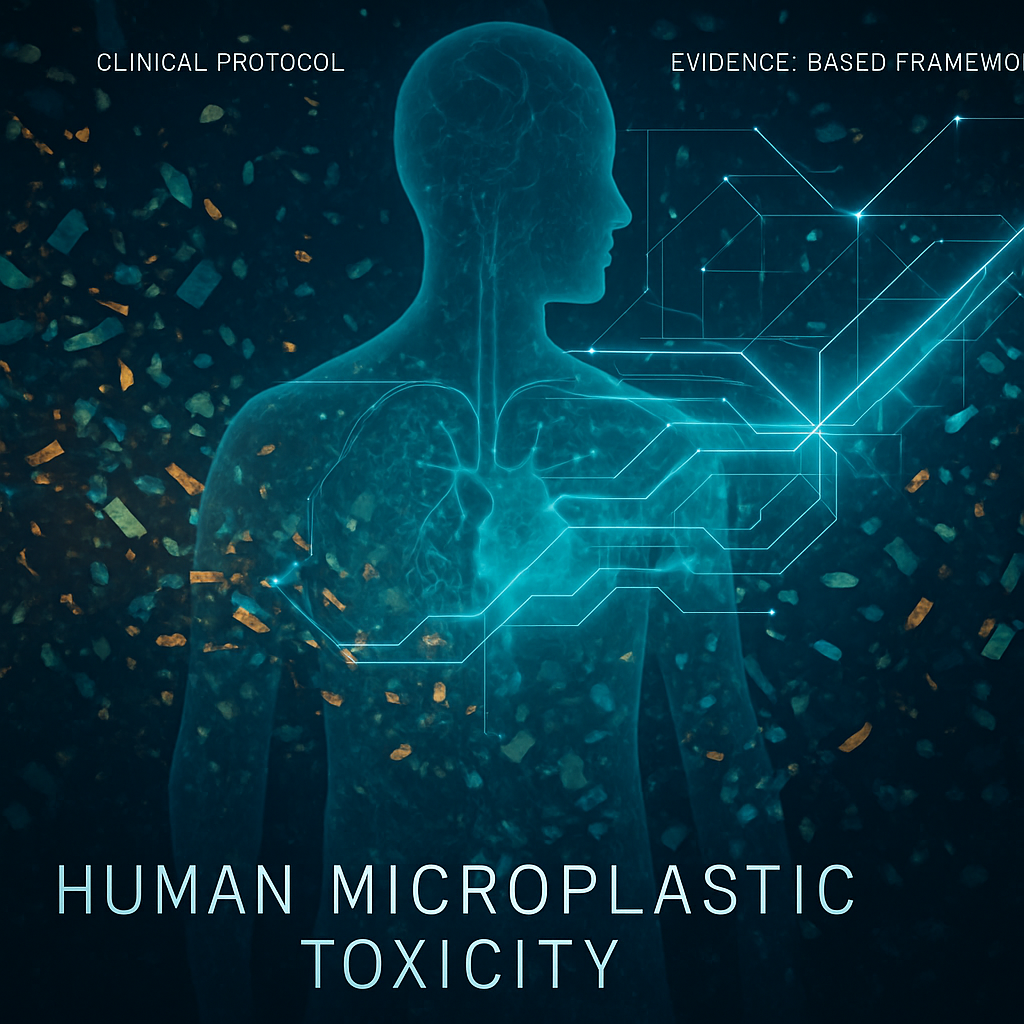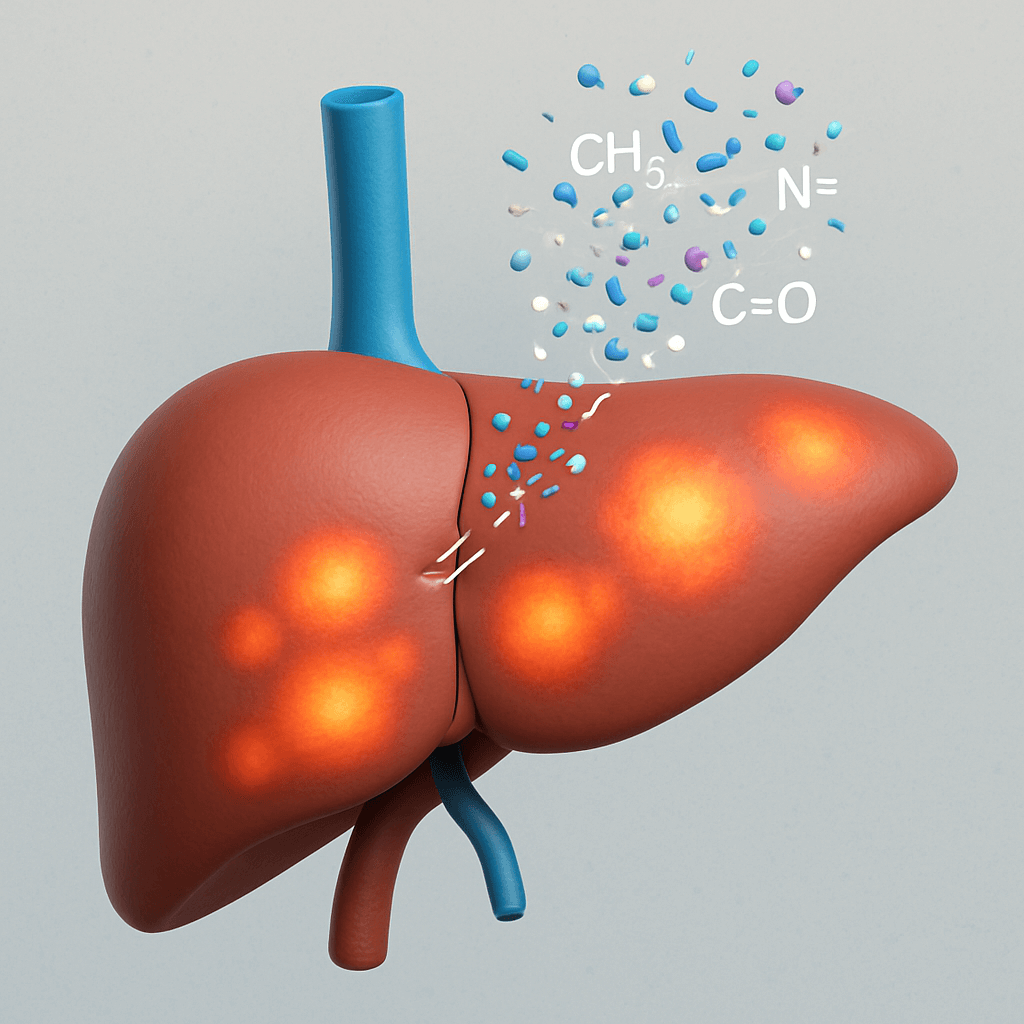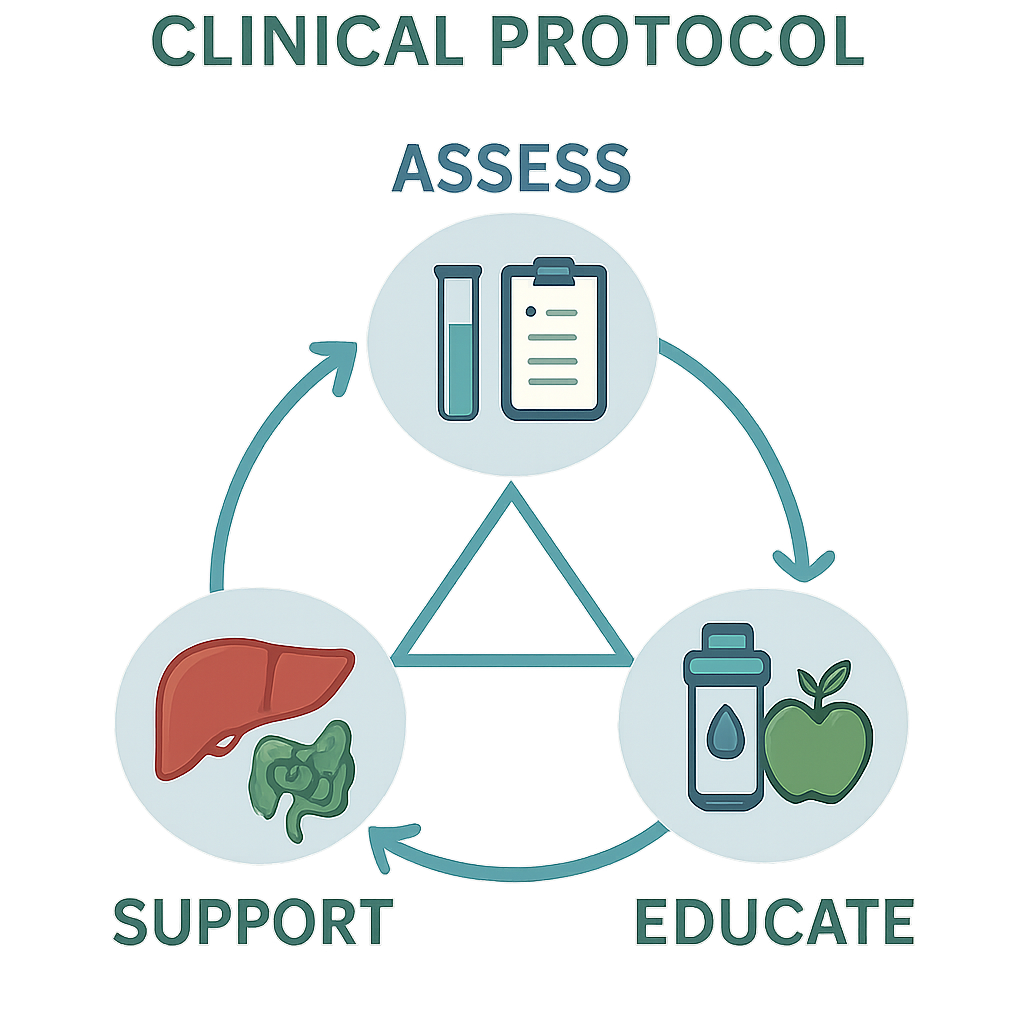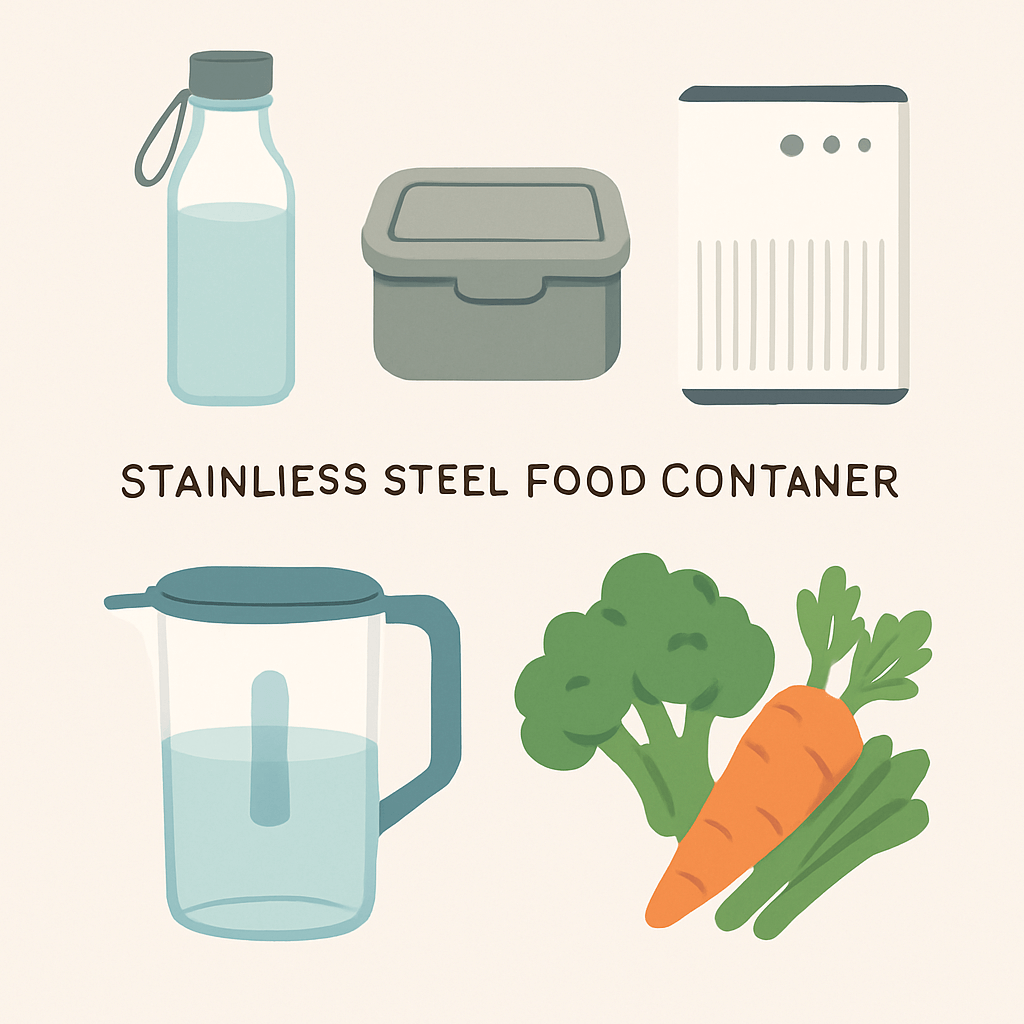
A Clinical Protocol for Mitigating Microplastic Toxicity: Integrating Custom Chelation and Advanced Liver Support for High-Exposure Professionals
A Clinical Protocol for Human Microplastic Toxicity: The First Evidence-Based Framework for Assessment and Mitigation
With microplastics now detected in human blood, lungs, and placental tissue, clinicians are facing a new wave of patient questions about a ubiquitous, invisible threat. The challenge is no longer proving exposure, but knowing how to act. This article bridges the critical gap between academic toxicology and daily practice by proposing the first comprehensive, evidence-based clinical protocol for assessing and mitigating the health effects of human microplastic toxicity. Drawing on analysis of premier toxicological research from sources like Nature and the National Center for Biotechnology Information (PMC), this framework synthesizes complex data into an actionable protocol for forward-thinking practitioners.
Understanding the Landscape: The Clinical Imperative to Address Microplastic Toxicity
The Pathophysiology of Microplastic Toxicity: A Focus on Cellular and Metabolic Disruption
A Proposed Clinical Mitigation Framework: An Actionable Protocol
A Practical Toolkit: The Microplastic Toxicity Protocol Checklist
Understanding the Landscape: The Clinical Imperative to Address Microplastic Toxicity
To effectively manage patient outcomes, it is essential to move the discussion of microplastics from a theoretical environmental concern to a tangible clinical reality. The scale of exposure and the biological plausibility of harm necessitate a proactive clinical stance.
The Ubiquity of Exposure: From the Environment to Our Cells
Human exposure to micro- and nanoplastics (MNPs) is unavoidable. The primary vectors are ingestion, through contaminated food and water, and inhalation of airborne particles. Once inside the body, these particles are not inert; they can translocate from the gut and lungs into systemic circulation. As confirmed by numerous studies cataloged in PMC/NIH reviews, this systemic distribution leads to accumulation in various tissues and organs, contributing to the overall body burden of this novel toxicant. The confirmation of microplastic exposure is no longer a question of "if," but "to what extent" for any given patient.
Why Clinicians Must Act: The Limitations of a "Wait and See" Approach
While research connecting MNP exposure directly to specific disease diagnoses is still evolving, the evidence of sublethal pathogenic mechanisms is compelling. The known inflammatory and oxidative effects of these particles demand proactive clinical assessment and mitigation. A "wait and see" approach ignores the fundamental principles of toxicology and preventive medicine. In the field of environmental health, waiting for definitive epidemiological proof of disease causality before acting often means waiting too long. Establishing a clinical protocol now allows practitioners to support patient resilience, reduce underlying inflammatory triggers, and address the physiological insults as they occur, rather than waiting for irreversible pathology to manifest.
The Pathophysiology of Microplastic Toxicity: A Focus on Cellular and Metabolic Disruption
Understanding the pathophysiology of MNP toxicity is critical for designing effective clinical interventions. The harm is not merely mechanical; it is a complex cascade of biochemical reactions that primarily target cellular integrity and metabolic function, with the liver acting as a central processing hub.
The Core Mechanisms: Oxidative Stress and Chronic Inflammation

The Cellular Impact of Microplastic Toxicity
At the cellular level, MNPs act as persistent physical and chemical stressors. Their high surface-area-to-volume ratio facilitates the generation of reactive oxygen species (ROS), leading to a state of chronic oxidative stress. This overwhelms the cell's antioxidant defenses, causing damage to lipids, proteins, and DNA. This process is analogous to the damage caused by other persistent toxicants like heavy metals or airborne particulate matter. The resulting cellular injury triggers a sustained, low-grade inflammatory response. This chronic inflammation is a well-established driver of numerous pathologies, from metabolic syndrome to neurodegenerative conditions, making it a primary target for clinical intervention.
The Liver: Ground Zero for Metabolic Disruption

The Liver's Burden: Processing Microplastics
The liver bears a significant burden from systemic MNP exposure. As the body's primary detoxification organ, it attempts to process and eliminate these foreign particles and their adsorbed chemical co-contaminants (e.g., phthalates, bisphenols). As detailed in rigorous toxicological studies published in journals like Nature, this process can induce hepatotoxicity, disrupt lipid metabolism, and impair glucose homeostasis. The persistent inflammatory signaling and oxidative damage can promote conditions such as non-alcoholic fatty liver disease (NAFLD) and insulin resistance. This positions liver health as a cornerstone of any protocol addressing human microplastic toxicity and its potential for systemic metabolic disruption.
A Proposed Clinical Mitigation Framework: An Actionable Protocol

The 3-Stage Clinical Protocol for Microplastic Toxicity
This mitigation framework translates toxicological data into a logical, multi-stage clinical approach. It provides practitioners with a structured pathway to assess risk, implement evidence-based supportive care, and guide patients through a complex and evolving health challenge.
Stage 1: Diagnostic Assessment and Body Burden Evaluation
A precise diagnostic assessment for MNP body burden in a clinical setting is still an emerging science. Direct particle detection in blood or tissue via methods like pyrolysis-gas chromatography-mass spectrometry (Py-GC/MS) remains largely confined to research environments. However, clinicians can utilize indirect biomarker assessment to evaluate the physiological impact of exposure. This involves a functional medicine approach, testing microplastic exposure effects through panels that measure markers of:
Oxidative Stress: 8-OHdG (8-hydroxy-2'-deoxyguanosine), lipid peroxides.
Systemic Inflammation: hs-CRP (high-sensitivity C-reactive protein), cytokine panels.
Liver Function & Stress: A comprehensive metabolic panel with ALT, AST, GGT, and bilirubin.
Gut Barrier Integrity: Zonulin and lipopolysaccharide (LPS) levels.
This approach shifts the focus from identifying the particle to measuring its biological effect, which is immediately clinically actionable.
Stage 2: Evidence-Based Supportive & Mitigation Strategies
The core of this clinical protocol is to enhance the body's intrinsic detoxification and antioxidant systems, with a particular focus on the liver and gut. This strategy is not about "removing" plastic but about bolstering resilience against its toxic effects. Key interventions include:
Advanced liver support:
Glutathione Enhancement: Providing precursors like N-acetylcysteine (NAC) and glycine to boost the production of the body's master antioxidant.
Phase II Detoxification Support: Utilizing compounds like sulforaphane (from broccoli sprouts) and calcium-D-glucarate to aid in the conjugation and elimination of toxins.
Hepatoprotective Botanicals: Incorporating milk thistle (silymarin) and turmeric (curcumin) for their well-documented anti-inflammatory and antioxidant effects on the liver.
Gut Barrier Integrity:
Restoring the mucosal lining with agents like L-glutamine, zinc carnosine, and targeted probiotics. A healthy gut barrier can help reduce the translocation of MNPs and associated endotoxins into circulation.
These strategies are central to a functional medicine approach that seeks to restore systemic balance.
Stage 3: Debunking Ineffective Myths vs. Outlining Future Therapies
A key role for the clinician is to provide clear, evidence-based guidance and correct misinformation. Patients may inquire about chelation therapy for microplastic detoxification. It is crucial to explain that traditional chelation agents are designed to bind to heavy metals with specific ionic charges and are completely ineffective for removing inert, non-charged polymer fragments like plastics.
In contrast, it is valuable to discuss promising future therapies to show engagement with cutting-edge science. One such area is therapeutic apheresis, a process where blood is filtered outside the body. While still experimental for this application, research is exploring its potential to remove circulating microplastics and inflammatory proteins from the bloodstream, offering a potential future tool for high-burden individuals.
Special Considerations for High-Exposure Populations
A comprehensive risk assessment must account for individuals with significantly higher exposure levels due to their occupation or environment. This demonstrates a practical, real-world application of the protocol beyond general population concerns.
Occupational Exposure: A Profile of Industrial Workers
Individuals working in industries such as plastics manufacturing, synthetic textile production, and waste management represent high-exposure populations. Inhalation is a primary route of entry in these settings. For these patients, occupational health protocols should be emphasized, including:
Exposure Reduction: Recommending the consistent use of high-grade respiratory protection (e.g., N95 or P100 respirators).
Targeted Monitoring: More frequent screening of inflammatory and oxidative stress markers, alongside regular pulmonary function tests.
Enhanced Support: A more aggressive and sustained protocol for liver and antioxidant support may be warranted.
Geographic and Lifestyle Factors
A thorough risk assessment should also consider other factors. Proximity to industrial zones, landfills, or major transportation arteries can increase airborne MNP exposure. Furthermore, a high dietary intake of ultra-processed foods, bottled water, and seafood can significantly increase ingestion. An environmental health specialist or a functionally-trained clinician can help patients identify and mitigate these key exposure sources in their daily lives.
A Practical Toolkit: The Microplastic Toxicity Protocol Checklist

A Patient's Toolkit for Reducing Microplastic Exposure
This checklist distills the framework into a concise, actionable summary for quick reference in a clinical setting.
Assessment:
Baseline Biomarkers: Order labs for hs-CRP, 8-OHdG, GGT, ALT, and zonulin.
Exposure History: Conduct a thorough intake covering occupation, geographic location, and diet (especially packaged food and bottled water consumption).
Core Support:
Liver Resilience: Recommend N-acetylcysteine (NAC) 600-1200 mg/day.
Gut Barrier: Recommend L-glutamine 5-10 g/day.
Antioxidant Defense: Recommend a high-potency, broad-spectrum antioxidant formula or key botanicals like curcumin and silymarin.
Patient Education:
Filter Air & Water: Advise use of HEPA air filters at home and high-quality water filters for drinking and cooking.
Reduce Plastic Contact: Encourage shifting from plastic to glass or stainless steel for food storage and water bottles.
Choose Fresh Foods: Advocate for a diet based on whole, unprocessed foods to minimize intake from packaging.
Red Flags (When to Refer):
Persistently Elevated Liver Enzymes: If liver markers do not improve with supportive care, refer to a gastroenterologist or hepatologist.
Significant Respiratory Symptoms: In cases of high occupational exposure with new or worsening respiratory issues, refer to a pulmonologist.
Complex Toxin Picture: If heavy metal co-exposure is suspected, refer to a specialist in medical toxicology.
Conclusion
The science of microplastic toxicity is rapidly advancing, but clinicians and their patients cannot afford to be passive observers. The biological plausibility of harm, combined with ubiquitous exposure, demands a proactive and supportive clinical strategy today. This article provides the first evidence-based, actionable clinical framework to empower practitioners to move from concern to confident clinical action. By implementing this protocol, clinicians can effectively manage patient concerns, support the body's natural resilience against microplastic toxicity, and lead the way in the critical and emerging field of environmental medicine.
MDRX Network, LLC
Phone: 832-500-7888
Email: [email protected]
